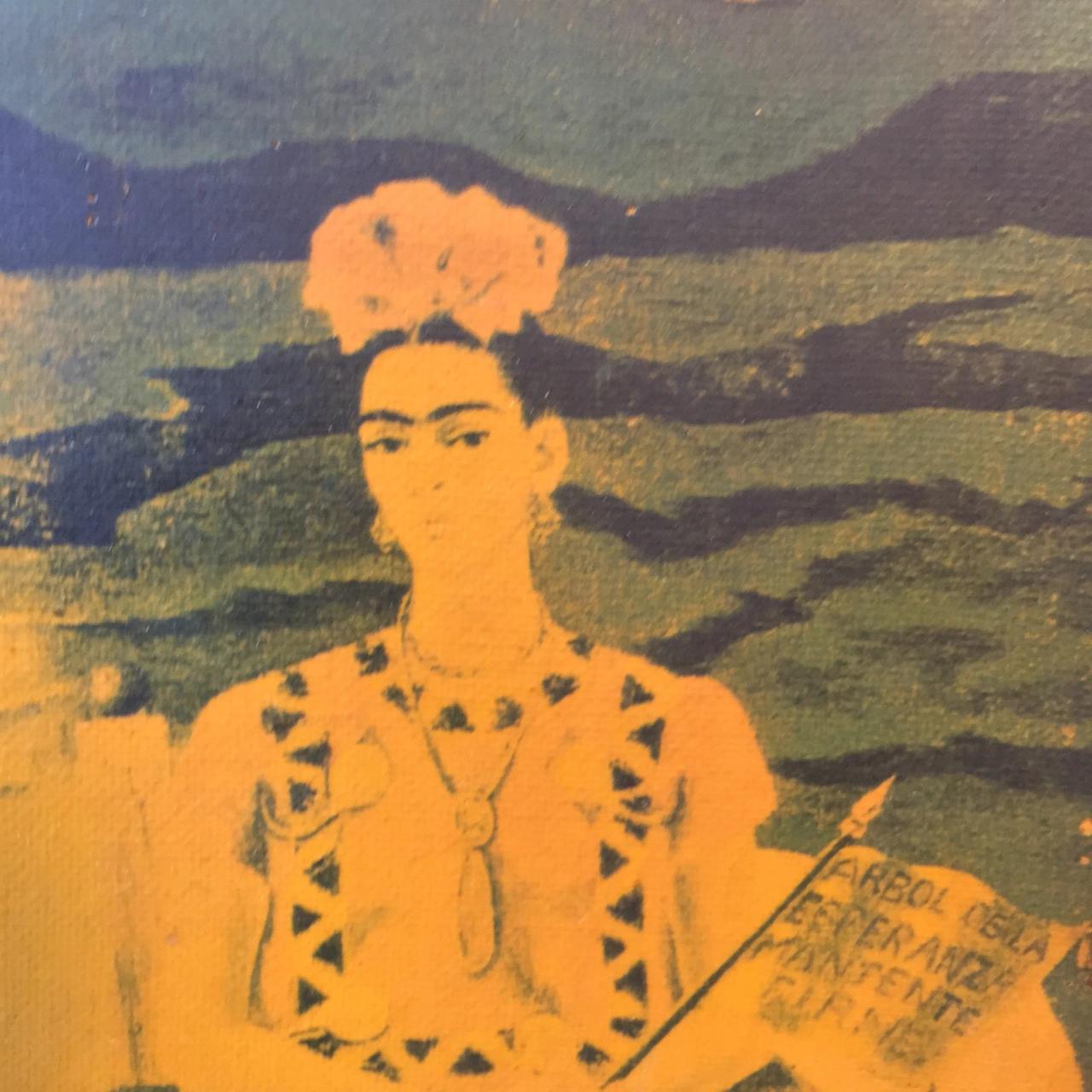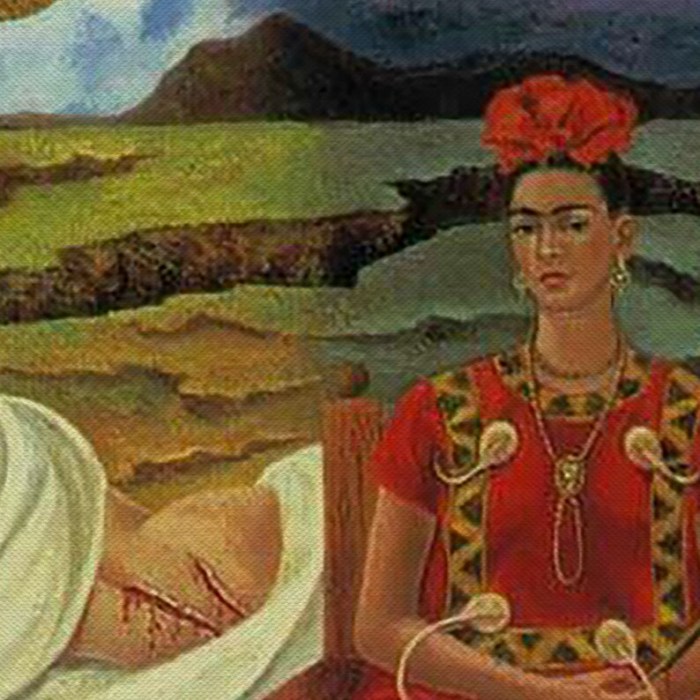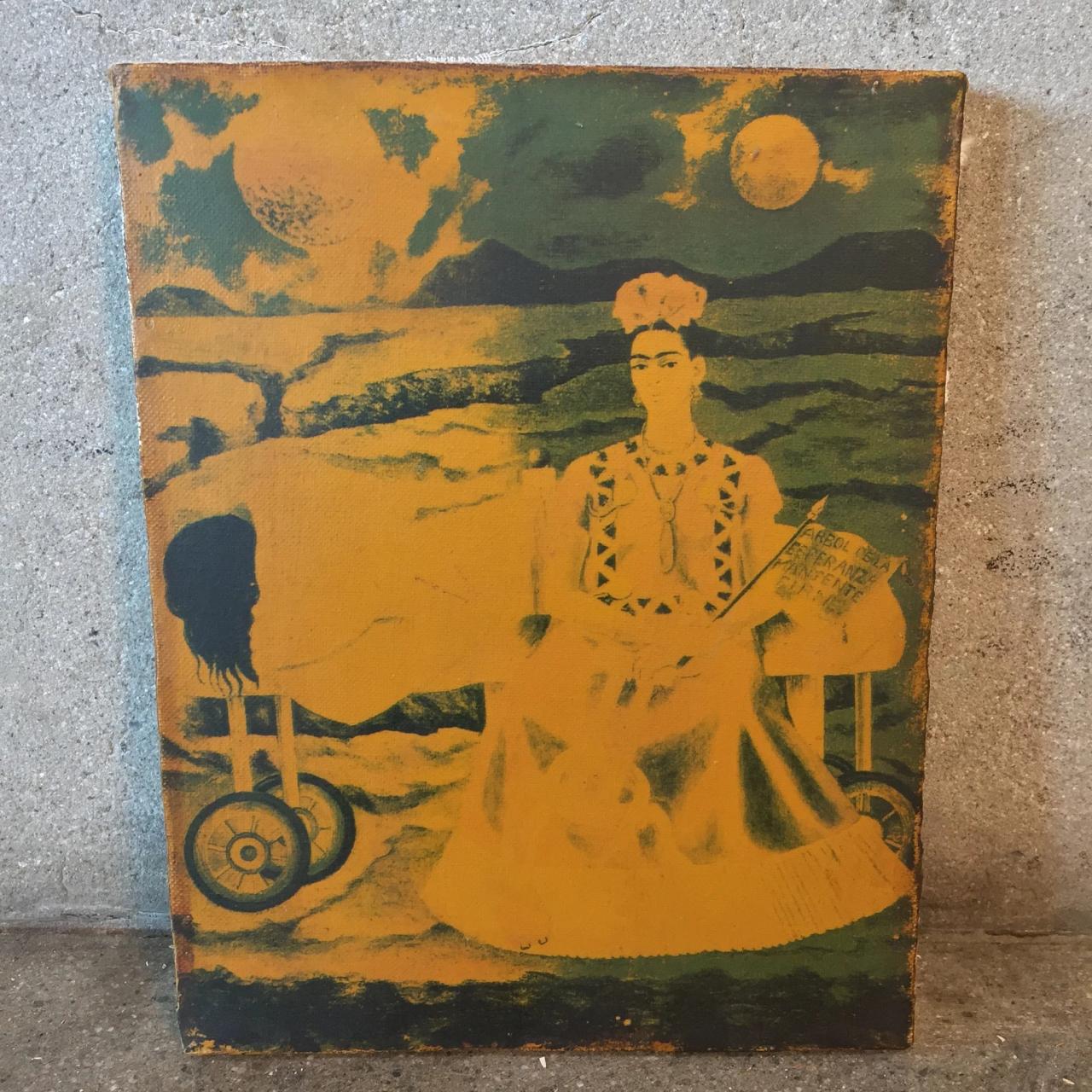Frida kahlo tree of hope – Frida Kahlo’s Tree of Hope sets the stage for this enthralling narrative, offering readers a glimpse into a story that is rich in detail and brimming with originality from the outset.
The Tree of Hope, a recurring symbol in Kahlo’s paintings, serves as a poignant representation of her resilience, strength, and unwavering hope amidst adversity. It is through this symbol that we delve into the life and legacy of this extraordinary artist, exploring the cultural and historical context that shaped her unique perspective and artistic expression.
Frida Kahlo’s Life and Legacy
Frida Kahlo, a Mexican painter known for her captivating self-portraits, emerged as a prominent figure in the art world, leaving a lasting impact. Born in 1907, her life was marked by personal struggles, including a near-fatal bus accident at the age of 18. This accident left her with severe physical pain and lifelong health issues, which became central themes in her art.
Artistic Style
Kahlo’s unique artistic style was heavily influenced by her personal experiences and Mexican folk art. Her self-portraits often depicted her physical and emotional pain, exploring themes of identity, sexuality, and the female body. She used vibrant colors, symbolism, and surreal elements to create powerful and evocative images that transcended traditional artistic conventions.
Significance of Self-Portraits
Kahlo’s self-portraits served as a means of self-expression and catharsis. Through them, she explored her inner world, expressing her pain, desires, and fears. Her ability to portray her emotions and experiences with such raw honesty and vulnerability resonated with audiences, making her art deeply personal and relatable.
The Tree of Hope Symbolism
In Frida Kahlo’s paintings, trees often symbolize resilience, strength, and hope amidst adversity. The “Tree of Hope” is a particularly powerful example of this symbolism.
Connection to Mexican Heritage
The tree is deeply rooted in Mexican culture and mythology. It represents the connection between the physical and spiritual worlds, as well as the strength and endurance of the Mexican people.
Representation of Resilience
In Kahlo’s “Tree of Hope,” the tree’s trunk is strong and sturdy, despite the barren landscape surrounding it. This represents Kahlo’s own resilience in the face of physical pain, emotional turmoil, and societal challenges.
Symbol of Strength, Frida kahlo tree of hope
The tree’s branches reach up towards the sky, symbolizing Kahlo’s determination to overcome adversity and reach her full potential. The leaves are vibrant and green, representing her hope for a brighter future.
Expression of Hope
The “Tree of Hope” is a powerful expression of Kahlo’s belief in the human spirit’s ability to endure and thrive even in the most challenging circumstances.
Artistic Techniques and Influences

Frida Kahlo’s paintings are characterized by their unique style and techniques that blend elements of Mexican folk art, surrealism, and indigenous traditions. Her use of vibrant colors, symbolism, and imagery conveys her emotions and experiences in a powerful and evocative manner.
Frida Kahlo’s Tree of Hope is a powerful symbol of resilience and hope, much like the story of Leah, a citizen of Maine . Both embody the strength of the human spirit in overcoming adversity. Just as Frida found solace and renewal in her Tree of Hope, Leah’s unwavering determination serves as a beacon of hope for others facing challenges.
Mexican Folk Art
Kahlo was deeply influenced by Mexican folk art, particularly the traditional art of the Tehuana people from the Isthmus of Tehuantepec. She incorporated elements of Tehuana dress, jewelry, and iconography into her paintings, celebrating the strength and resilience of Mexican women.
Surrealism
Kahlo’s connection with surrealism, a movement that sought to explore the subconscious mind, is evident in her paintings. She used dreamlike imagery, symbolism, and unconventional perspectives to express her inner thoughts and emotions.
Indigenous Traditions
Kahlo’s indigenous heritage also played a significant role in shaping her art. She drew inspiration from pre-Columbian artifacts, Aztec mythology, and traditional Mexican healing practices. Her paintings often feature elements of nature, animals, and spiritual symbols.
Use of Color, Symbolism, and Imagery
Kahlo’s use of color is bold and expressive. She often employed vibrant hues, such as reds, greens, and blues, to convey emotions and create a sense of depth and intensity. Her paintings are rich in symbolism, with objects and images carrying multiple meanings and interpretations.
For instance, the hummingbird, a symbol of love and hope, appears frequently in her work. The tree of life, representing resilience and strength, is another recurring motif. Kahlo’s self-portraits, often depicting her in pain or distress, explore themes of identity, suffering, and female empowerment.
Cultural and Historical Context

Frida Kahlo’s life and art were profoundly shaped by the tumultuous historical and cultural context of Mexico during her lifetime.
The Mexican Revolution, which began in 1910, was a period of great upheaval and social change. The revolution led to the overthrow of the dictatorship of Porfirio Díaz and the establishment of a new constitution in 1917. The revolution also had a significant impact on Mexican art, as it encouraged artists to explore themes of national identity and social justice.
Political and Social Climate
The political and social climate of Mexico during Frida Kahlo’s lifetime was complex and often volatile. The country was plagued by political instability, economic inequality, and social unrest. These conditions had a profound impact on Kahlo’s art, which often reflected the struggles and aspirations of the Mexican people.
Reflection of Cultural and Historical Context
Frida Kahlo’s work is deeply rooted in the cultural and historical context of her time. Her paintings often depict the suffering and resilience of the Mexican people, as well as the country’s rich cultural traditions. Kahlo’s art is a powerful testament to the strength and spirit of the Mexican people.
Legacy and Impact

Frida Kahlo’s enduring legacy as an artist and cultural icon stems from her groundbreaking artistic style, deeply personal subject matter, and unwavering resilience in the face of adversity.
Her work has had a profound impact on subsequent generations of artists, inspiring them to explore their own identities, challenge societal norms, and use art as a form of self-expression and healing.
Impact on Art and Culture
- Frida Kahlo’s unique blend of surrealism, symbolism, and Mexican folk art has influenced countless artists, including Leonora Carrington, Remedios Varo, and Artemisia Gentileschi.
- Her fearless exploration of female identity, sexuality, and pain has paved the way for contemporary feminist artists to tackle similar themes in their work.
- Kahlo’s art has been widely exhibited in museums and galleries around the world, bringing her work to a global audience and inspiring artists from diverse backgrounds.
Resonance with Audiences Today
- Frida Kahlo’s work continues to resonate with audiences today due to its raw honesty, emotional depth, and universality of human experience.
- Her paintings and drawings explore themes of pain, love, identity, and resilience, which are timeless and relatable to people of all ages and backgrounds.
- Kahlo’s art serves as a reminder that even in the face of adversity, it is possible to find strength, beauty, and meaning in life.
FAQ Compilation: Frida Kahlo Tree Of Hope
What is the significance of the Tree of Hope in Frida Kahlo’s paintings?
The Tree of Hope represents Frida Kahlo’s resilience, strength, and hope amidst adversity. It symbolizes her ability to endure physical and emotional pain and to find beauty and meaning in life’s challenges.
How did Frida Kahlo’s Mexican heritage influence her artwork?
Frida Kahlo’s Mexican heritage is deeply embedded in her artwork. She drew inspiration from Mexican folk art, indigenous traditions, and the political and social climate of her time. Her paintings often reflect the vibrant colors, symbolism, and cultural motifs of Mexico.
What are some of the unique painting techniques used by Frida Kahlo?
Frida Kahlo’s painting techniques were influenced by Mexican folk art, surrealism, and indigenous traditions. She often used bright colors, symbolism, and imagery to convey her emotions and experiences. Her paintings are characterized by their bold lines, simplified forms, and attention to detail.